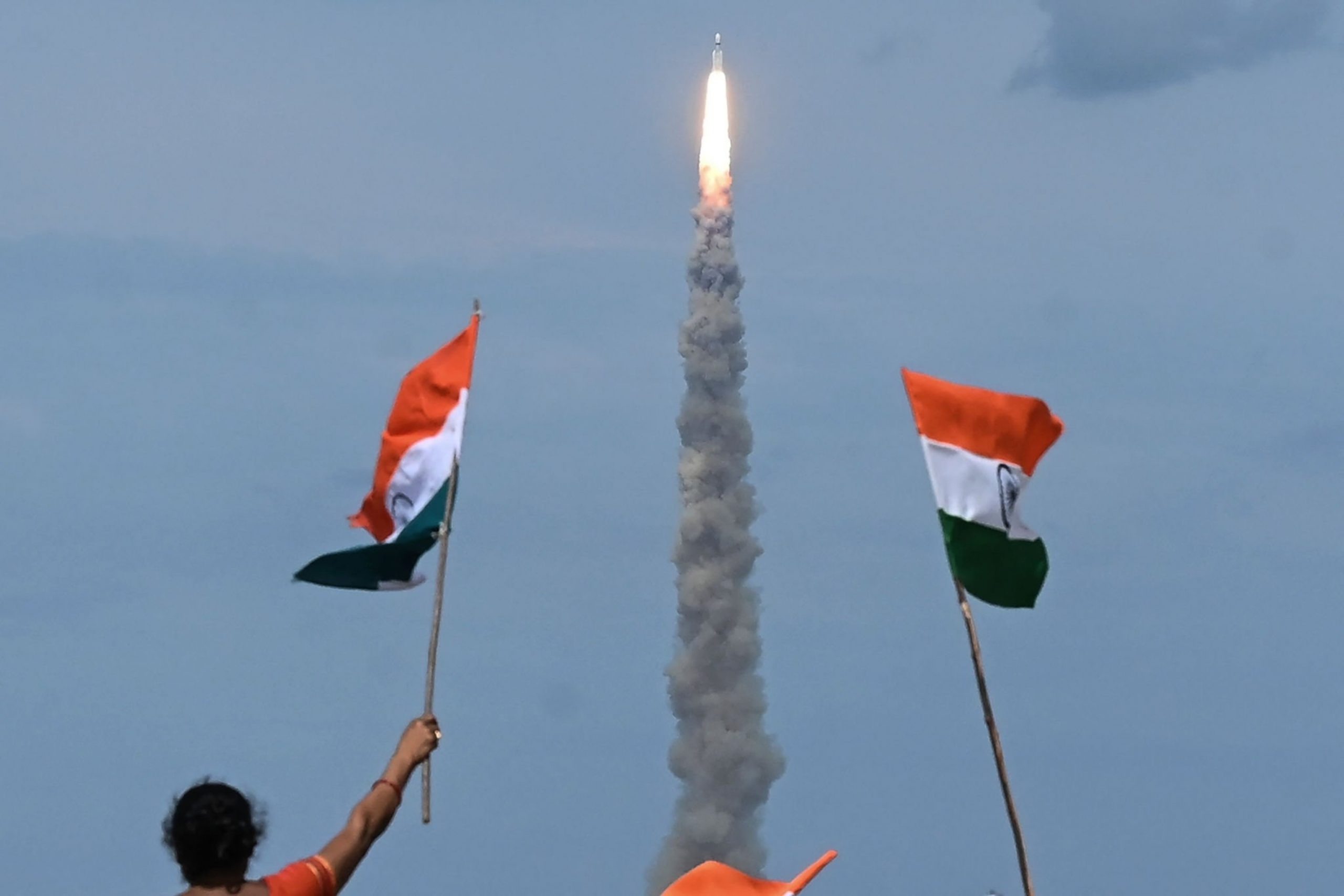Biju Dharmapalan
Human civilizations on Earth have evolved mainly around rivers or based on an agrarian system. Humans have exploited the planet Earth that every part of it is polluted due to anthropogenic activities. In the long run, this planet won’t be able to support our species. Human species like any other species is bound to become extinct after a stipulated period, of course after several million years. If that happens our species will be removed from the earth as what happened to dinosaurs. Scientists are trying to save our species by introducing it and establishing it on other planets. It’s with these objectives they are exploring the possibility of finding habitable planets. The next human civilization will occur in the space colonies, and other countries that can conquer space will be able to survive that period.
The first phase of India’s third mission to the moon Chandrayaan-3 thathas been successfully done on 14th July from the Satish Dhawan Space Centre Sriharikota using the Launch Vehicle Mark-III (LVM-3) will make India establish its niche in space. If everything goes as planned the Pragyan rover in the Chandrayaan-3 will land softly on the south pole of the lunar surface.The Pragyan rover, equipped with six wheels, will carry two payloads aimed at discovering materials from the ancient lunar crust through the use of spectrometers. Furthermore, one of the payloads, called the Spectro-polarimetry of Habitable Planet Earth (SHAPE), will analyze spectral and polarimetric radiation to gain insights into the potential signatures of habitable Earth-like planets. Over the past 65 years, six nations have undertaken 70 missions to the Moon, both successful and partially successful. While a significant number of these missions involved orbiting Earth’s sole natural satellite, only a fraction of them involved successful lunar landings.If Chandrayaan-3 achieves a soft landing as expected probably on August 23 or 24th, India will become the fourth country, after the United States, Russia, and China, to achieve the feat and emerge as a leader in space explorations and colonization. Even though the previous Chandrayaan missions failed to achieve soft landing considerable data regarding the lunar environment has been gathered, a commendable one being the first report of the presence of water on the lunar surface.
But why is it that every nation is vying for space on the moon?
The Moon is Earth’s natural satellite, a celestial body that orbits around our planet. It is the fifth-largest moon in the Solar System and is approximately 1/6th the size of Earth. The Moon is located at an average distance of about 384,400 kilometers (238,900 miles) from Earth.The Moon is tidally locked with Earth, which means that it always shows the same face to us. The side facing Earth is called the near side, while the opposite side is the far side or the “dark side” (though it receives sunlight just like the near side).The Moon has a rocky surface covered with impact craters, mountains, valleys, and plains. The plains, known as maria (Latin for “seas”), are large, dark areas formed by ancient volcanic activity. The highlands, on the other hand, are lighter in colour and have a more rugged topography.The Moon has a very thin atmosphere called an exosphere, which consists of extremely low-density particles such as hydrogen, helium, and trace amounts of other elements. Due to its lack of atmosphere, the Moon does not have weather, wind, or significant erosion processes.The Moon plays a significant role in Earth’s dynamics. It affects our planet’s tides through gravitational interactions, which in turn influence coastal ecosystems and other natural phenomena.
The Moon has been a subject of fascination and exploration for centuries. Human missions, such as the Apollo program in the 1960s and 1970s, have landed astronauts on the lunar surface, allowing us to gather samples, conduct experiments, and gain a better understanding of our closest celestial neighbour.
Nations are going back to the Moon due to the scientific, technological, economic, and strategic benefits it offers. The Moon is believed to contain valuable resources, such as water ice and other volatiles in the permanently shadowed regions of the Moon. Understanding the distribution and characteristics of these resources is essential for potential future lunar exploration and colonization efforts. Scientists are interested in studying these volatiles to assess their availability for supporting human activities and to learn more about their origin and potential uses.As interest in space resource utilization grows, future missions could involve setting up mining operations and industrial infrastructure on the Moon. This could involve extracting and processing resources for use in space, such as rocket propellant or construction materials. Accessing and utilizing these resources on the Moon could reduce the costs and logistical challenges associated with long-duration space exploration. It could act as a transit point for long-distance space travels when space colonies will become a reality.
The Moon provides a stepping stone for future space exploration and offers numerous opportunities for collaboration, resource utilization, and human space settlement, which can have far-reaching implications for both scientific knowledge and also helps in establishing humans as a multi-planet species, thereby saving the species from an imminent extinction. Being at the forefront of space research will give nations an advantage in surviving the perils of the space colony era, and India is sure to excel as a global leader in next-generation human civilization in space.
(The author is a science communicator and columnist)


